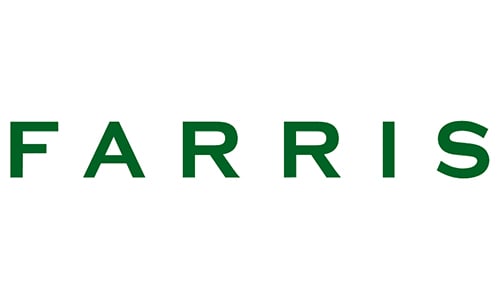Plans of arrangement are a unique structuring tool for completing Canadian mergers and acquisitions (M&A), particularly transactions involving public companies as well as acquiring private companies with a large number of securityholders. Plans of arrangement are a court-supervised statutory process that, in a single transaction, can address purchases or exchanges of shares or assets, amalgamations, reorganizations and/or compromises with securityholders or creditors. By utilizing a plan of arrangement for an M&A transaction, parties can overcome minority securityholder objections or achieve otherwise intricate changes in corporate structure under judicial oversight, providing a level of certainty and order that can be advantageous and efficient.
Advantages to plans of arrangement
The key advantage to plans of arrangement is that they do not require the agreement of every single shareholder or other stakeholder of a target company. A court will approve the arrangement so long as (1) the statutory procedures found in the Canada Business Corporations Act or the equivalent provincial legislation governing the target company are satisfied, (2) the plan of arrangement has been put forward in good faith, and (3) the arrangement is “fair and reasonable”.[1]
Plans of arrangement are commonly used for the following M&A situations:
- Public company acquisitions: Negotiated public company acquisitions, since they always involve a widely held shareholder base that would be practically impossible to have sign onto an agreement.
- Private company acquisitions: An increasing number of private companies have diverse securityholder bases that are well-suited to arrangements. A common example are technology companies that have had several rounds of investor funding and often also have employee optionholders or other convertible securityholders. In such circumstances, a plan of arrangement may provide the most practical and certain path to completion.
- Concurrent reorganizations: Before or after the main transaction closes, target companies often want to facilitate a corporate reorganization which may have operational or tax benefits for the target company or its stakeholders. A plan of arrangement can facilitate this as additional steps to the overall plan being approved by the court.
- Related parties: If a transaction involves related parties, such as directors and officers who may stand to financially benefit from the transaction because they are also securityholders or have employment change of control provisions in their favour, a plan of arrangement can help address potential conflicts of interest and obtain court approval that the transaction is fair.
Timeline and process for a plan of arrangement
The typical plan of arrangement contains the following key elements to the legal structure and timeline:
- Confidentiality and LOI: Following initial business discussions and negotiations, the formal process generally begins when the prospective purchaser and target company enter into a confidentiality agreement so that their continued discussions and due diligence of the target company remain confidential. The parties will typically then negotiate and execute a letter of intent (“LOI”) containing confidentiality provisions, as well as outlining key business terms and high-level conditions precedent to completing the transaction.
- Preparation of the arrangement agreement: Based on the LOI, an arrangement agreement is negotiated and entered into that sets forth the binding terms of the transaction. The purchaser may concurrently enter into “lock-up” or “support” agreements with major securityholders and directors and officers of the target company in which those parties agree to vote in favour of the arrangement, in order to increase deal certainty before further steps are taken.
- Interim court order: Once the arrangement agreement is signed, the parties must apply to court for an interim order. This interim order authorizes the target company to call a meeting of shareholders (and other securityholders, if their vote is being sought) and outlines the procedural requirements for notice, voting and approval.
- Shareholder (or securityholder) meeting and approval: Following the issuance of the interim order, the target company must call and hold a shareholder or other securityholder meeting to seek approval of the arrangement, as well as prepare the meeting materials to be delivered in advance of the meeting. Typically, a supermajority vote (often two-thirds) is recommended or required. If there are multiple classes of affected securityholders, each class may have to conduct its own vote. Approvals from creditors or other stakeholders may also be recommended or required, depending on the scope of the transaction and those stakeholders’ rights.
- Final court order: If the voting securityholders approve the arrangement, the target company must return to court to seek a final order. During this hearing, the court assesses whether the proposed arrangement is “fair and reasonable”, in that (a) it has a valid business purpose, and (b) the objections of those whose rights are being arranged are resolved in a fair and balanced way. Courts can consider various factors in this assessment, including the number of securityholders that approved the arrangement, the proportionality of compromise between various securityholders, and the presence (and detail) of a fairness opinion from a reputable expert (among other factors).
- Implementation: Once the final order is granted, the target company can proceed with implementing the arrangement. This may involve filing articles of arrangement with the corporate registry, completing any concurrent reorganization, and customary steps to otherwise close the transaction.
The time required to negotiate and complete a plan of arrangement can vary depending on the complexity of the transaction. A typical arrangement involving a single class of shareholder vote with no significant stakeholder opposition can typically be completed in 3-4 months. Government approvals can extend this timeline, but such approvals would typically apply regardless of transaction structure.
Potential risks and challenges in a plan of arrangement
Plans of arrangement present certain risks and challenges, most of which can be addressed or managed with proper planning at the outset of the transaction. These include:
- Judicial discretion: Given that court approval is a necessary component of a plan of arrangement, there is a degree of judicial discretion involved in determining whether the plan is fair and reasonable. This uncertainty can be alleviated by: (a) fulsome disclosure to all stakeholders and ensuring the voting process is fair, and (b) the preparation and delivery of a fairness opinion.
- Increased costs: The involvement of the court, as well as the need for a shareholder meeting and fulsome disclosure, can lead to higher costs compared to other transaction structures. Purchasers often negotiate a “break fee” in the arrangement agreement that the purchaser will receive if the arrangement is not ultimately approved by shareholders, which can offset the cost and expense for the purchaser pursuing a failed transaction.
- Extended timeline: The requirement to obtain court and shareholder approval means that plans of arrangement have a minimum timeline that is longer than certain other transaction structures.
- Stakeholder opposition: Given that shareholder and potentially other stakeholder approval is required, there is a risk of opposition from stakeholders if they feel that the arrangement does not adequately address their interests. Stakeholders may vote against the arrangement, raise objections in court, or exercise dissent rights which generally entitle them to receive fair market value for their securities, potentially delaying or derailing the transaction. Purchasers typically negotiate an exit clause in the arrangement agreement that permits them to walk away from the proposed transaction if it experiences a certain threshold of opposition.
- Disclosure requirements: Plans of arrangement involve fulsome disclosure requirements that are publicly filed in court. While fulsome disclosure is necessary to ensuring that the arrangement process is fair, such disclosure may involve financial information and strategic justifications which are of a proprietary nature and may not be in the company’s commercial best interest to disclose. Such disclosure can be particularly detrimental to the target company if the information is disclosed as part of the proposed transaction but then the transaction ultimately does not close for whatever reason.
Key takeaways
- Plans of arrangement provide a flexible way to facilitate M&A transactions involving a significant number of securityholders and/or where there are stakeholders who may not all support a transaction.
- Courts can conclude that a plan of arrangement is “fair and reasonable”, and therefore approve it, even where there are certain aspects of the process or treatment of stakeholders which the Court finds problematic. This highlights the fact-specific nature of plans of arrangement.
- Unless otherwise required by provincial legislation (as is the case in British Columbia), it may be “fair and reasonable” to combine the voting rights of different securities as a single class, which may be of assistance to a target company seeking to obtain securityholder approval.
- For parties considering a plan of arrangement, proactive planning and early engagement with legal advisors are essential to navigate these complexities effectively and ensure each step is completed in a timely manner. With appropriate diligence and a clear understanding of the framework, a plan of arrangement can serve as a powerful structuring tool, allowing companies to execute significant transactions while preserving stakeholder interests in a fair manner.
***
Lawyer bios:
 Peter Roth is a Partner in Farris’ Corporate & Commercial Group. He has over 15 years experience as corporate and transactional counsel, and regularly advises clients in diverse industries, including senior housing (and REITs), mining, real estate, construction, capital markets, fintech, wellness, technology and biotechnology. Peter is recognized in the Best Lawyers in Canada legal directory as a leading corporate governance, corporate, and mergers & acquisitions lawyer. He is recognized in the Canadian Lexpert Directory as a leading corporate finance and securities lawyer. He is also recognized by Lexpert as one of the leading Canadian lawyers in the global mining sector.
Peter Roth is a Partner in Farris’ Corporate & Commercial Group. He has over 15 years experience as corporate and transactional counsel, and regularly advises clients in diverse industries, including senior housing (and REITs), mining, real estate, construction, capital markets, fintech, wellness, technology and biotechnology. Peter is recognized in the Best Lawyers in Canada legal directory as a leading corporate governance, corporate, and mergers & acquisitions lawyer. He is recognized in the Canadian Lexpert Directory as a leading corporate finance and securities lawyer. He is also recognized by Lexpert as one of the leading Canadian lawyers in the global mining sector.
 Kurtis Harms is an Associate in Farris’ Corporate & Commercial Group. He maintains a general corporate and commercial practice, including mergers and acquisitions, securities law, corporate finance and corporate governance. Kurtis has a background in engineering and enjoys providing legal solutions with a pragmatic mindset and attention to detail.
Kurtis Harms is an Associate in Farris’ Corporate & Commercial Group. He maintains a general corporate and commercial practice, including mergers and acquisitions, securities law, corporate finance and corporate governance. Kurtis has a background in engineering and enjoys providing legal solutions with a pragmatic mindset and attention to detail.





